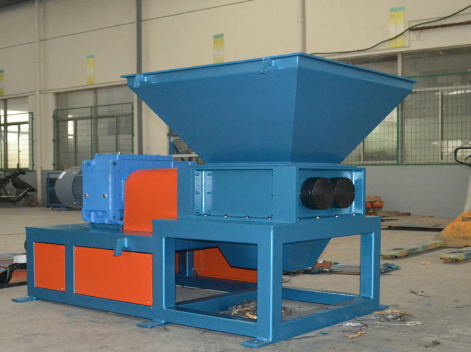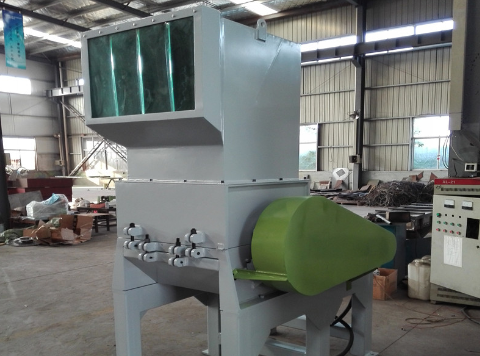Often, the terms grinder, shredder, and granulator are used interchangeably. So what is the difference and why does it matter? Perhaps the best way to approach this is to answer the "why does it matter?" question first. Buying a shredder when you really needed a grinder, or visa-versa, could cost you thousands of dollars in the purchase of a machine that just will not work for your application, or will not provide the production rates that your processing requires. Machines that perform size reduction processes can cost tens of thousands of dollars. There's no room for mistakes. An expert analysis of your application can save you thousands on equipment costs by helping you select the right piece of equipment. With that in mind, let's help you determine what you really need.
Shredding

So, you think you may need a "shredder" - but what does shredding actually do. Shredding is normally carried out in a machine that is "low speed and high torque". A shredder is designed to take large components and shred them down to random, smaller components - normally in the range of 1" - 2" and larger. Most often, a shredder is selected if you want to do any of the following:
ㆍReduce a product down for compacting of space in haul off applications to a landfill.
ㆍReduction of items such as tires to larger chips for fuel, drain fill, etc…
ㆍThe reduction of paper or confidential documents to pieces unrecognizable in regard to their former condition.
ㆍReduction of plastics for washing
ㆍDestruction of product of liability issues
ㆍOr the preparation of the product for another application.
Grinding
While we often interchange the terms "shredding" and "grinding", the actual process and the end product yielded, could not be further apart. Grinding, most simplistically stated, is the shaving, chipping or "grinding" of small pieces off of a larger piece. Or in the case of size reduction, grinding off small pieces until the original part is in thousands of smaller consistent chips, usually less than 1/4" to 1/2". So, what applications are best for grinding? There are many…
ㆍGrinding large rejected parts back to smaller chips that can then be recycled into making more parts.
ㆍReducing larger raw materials to chips that can be mixed with other compounds to make new components.
ㆍReducing organic materials for bio-fuels production.
ㆍGrinding carpet and other textiles for fiber reclamation.
Granulating

Granulators are perhaps the most commonly confused machines with grinders, as they essentially do the same thing; they take larger components and make them smaller. Perhaps the best way to know if you need a granulator is to determine how small you want your discharged component to be. Granulators have the ability to reduce certain materials to a much smaller particle size than a grinder. The reason for this is that a granulator differs in design significantly from a grinder in the following ways:
ㆍMost all granulators have an "open rotor" design. This means that there is a great deal of air space around the rotor for product agitation and cooling. The open rotor allows for better processing of lighter materials that would not be well suited for a closed rotor design.
ㆍMany Grinders on the other hand have closed rotor designs. Meaning the rotor is closed, high speed and very tight tolerances. These type rotors leave little room for the product being process to go anywhere other than across the cutting edges.
There are advantages to both designs mentioned above, but simply put; each design is more applicable to specific products.
ㆍA granulator, with an open rotor type design, is normally more applicable in taking small components in the ½" to 6" or 8" sizes and reducing them to much smaller chips than a grinder would be used to do. Often in the range of producing 5/16" flake to even powders.
ㆍGranulators are often used as an after process for materials that have been size reduced previously.
ㆍGranulators are well suited for lighter materials such as plastic bottles which do not grind well in a closed rotor design unit.
Final Comments
All of this is a large amount of information to consider when selecting the proper machine for your size reduction needs. And often, so many products can cross over from one machine to the next. In considering your needs, the best way to determine your needs is to answer the following questions:
ㆍWhat material am I trying to reduce?
ㆍWhat is the size of the material that will be fed into the size reduction unit?
ㆍHow much per hour will I need to do?
ㆍHow small do I want the final product to be?
So, grinder vs shredder vs granulator? Once you have answered these questions, application engineers who are experienced in size reduction of materials, such as those at OPTIMA, can help you determine the correct answer.















